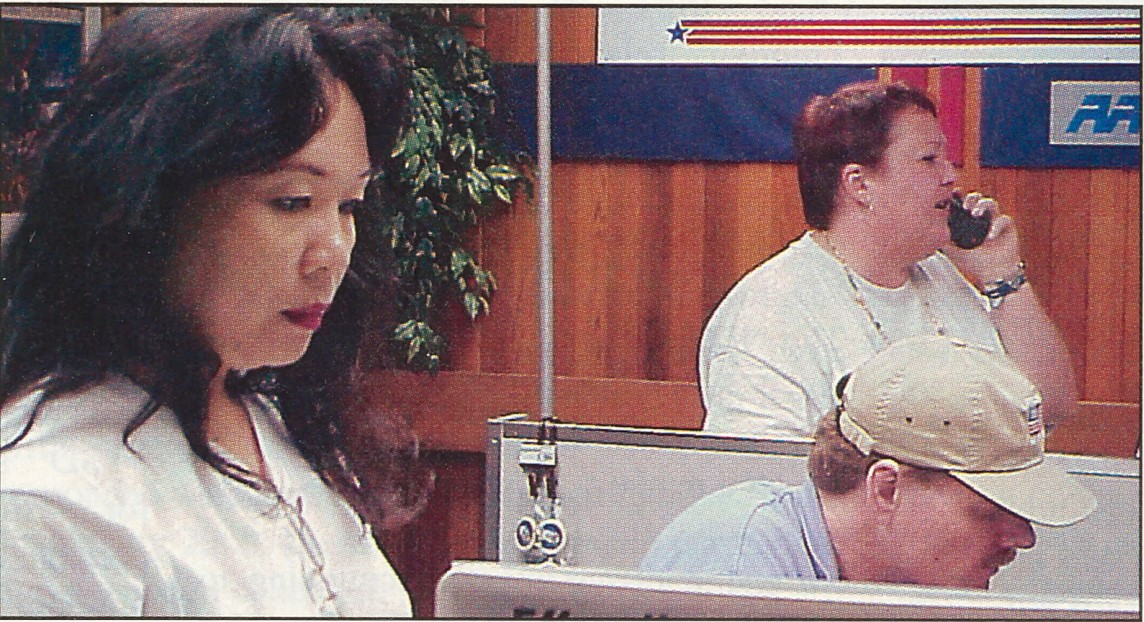#FlashbackFriday: 1999—The Exchange Prepares for Y2K

Twenty-five years ago today, calendars were a few days away from flipping over to the year 2000. With a year not beginning in 19 approaching, people worried about how computers would respond to a reset to 00 — leading to concerns about the Year 2000 problem, also known as the Y2K Bug.
“In the early days of computing, it was more cost-effective and convenient to store the [year’s[ date in two digits,” said a story in the Exchange Post archives. In other words, a date was expressed numerically as, for example, 12/27/99 instead of 12/27/1999.
“Now, the problem of converting 99 to 00 is huge because many companies, including AAFES, have millions of lines of computer code they must correct,” the article continued.
Concerns extended beyond computers also. “Other things, such as elevators, heaters, A/C units, traffic lights and aircraft may all be facing a crisis,” the article noted.
The Exchange was on top of the Y2K problem — that story ran in June 1997.
To address the change, the Exchange formed the AAFES Year 2000 project.The project’s team met regularly with four subcommittees:
- The Awareness Team, which provided shoppers and associates information and updates via brochures, newsletters, special websites, a toll-free phone number and more.
- The Planning Team, which developed strategy and kept management informed about the project’s progress.
- The Inventory Team, which gathered information about the hardware and software affected by the millennium change
- The Product/Service Tool Team, which was “responsible for acquiring the tools or services necessary to measure the impact of the date change within all of the programs that AAFES owns.”
Those broad descriptions only scratch the surface of what the teams had to do.
For instance, the Inventory Team “must find the number of programs, databases, screens and total lines of programming code that are affected,” the article said.
The project touched every Exchange directorate, facility—and associate: Payroll systems were thoroughly tested to ensure that associates would continue to be paid without interruption when the change happened. Project teams also had to make sure that Exchange business partners were Y2K compliant.
Beyond computers, stores had to prepare in other ways.
Demand increased for propane, gas stoves, lanterns and fuel containers because shoppers were stockpiling them in case something went seriously wrong with the Y2K switch. The Fort Belvoir PX reported one customer had been buying propane canisters—48 at a time.
Because of its proximity to the International Date Line, Andersen Air Force Base on Guam was selected as a special Y2K test site. The project was dubbed “Operation First Light.”
Guam Exchange computers switched over to 2000 without incident, 15 hours before the switch happened at Dallas headquarters—also without incident. Which was largely the trend: Although the article doesn’t mention the Exchange, Government Executive reported Jan. 3, 2000, that “the millennium bug made few appearances on DoD installations around the world.”
Sources: Exchange Post archives, Government Executive

Pictured in a March 2000 Exchange Post photo are, from left, three Operation First Light team members: Tess Miguel, Guam Military Clothing store manager; Brian Lawrence, HQ-IS (now IT); and Sylvia Scott, Guam data processing manager. Scott and Lawrence led local managers through a system checklist and provided detailed feedback to HQ, where the year 2000 started 15 hours later than it did in Guam.


I worked with Sylvia Scott some years ago at Travis AFB when they built the new BX complex. She was great to work with and I recognized her as soon as the Exhange Post popped up.